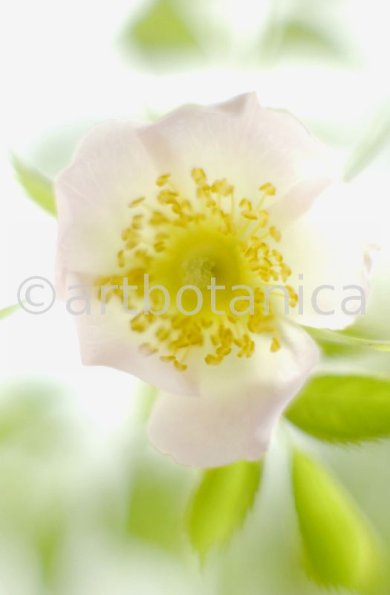GalleryBachblütenNr 37- Wild Rose Wild Rose

Tags:
- alternative medicine
- Arznei
- Arzneimittel
- Bach Flower Remedy
- Bachbluetentherapie
- Bachblüte
- Bachblüte Wild Rose
- Bachblüten
- Bachblütenbilder
- Bachblütenfotos
- Bachflower remedies images
- Bachflower remedies picture
- Bad
- Badezimmer
- Bildmotiv für Küchenrückwand
- Bildmotive fuer Duschrueckwand
- Bildmotive fuer fotofliese
- Bildmotive für Kuechenrueckwaende
- Birkenrinde
- Blooms
- Blüte
- Blütenblatt
- Blütenmotive für Küchenrückwände
- brillant
- closeup
- Deko Bad
- Deko Badetzimmer
- Deko Badezimmer
- Deko fuer Bad
- Deko für die Küche
- Deko für Küche
- Deko Küche
- Dr.Edward Bach
- Druck auf Glas
- Druck hinter Glas
- Duschrueckwaende
- Duschrueckwand
- Energy healing
- Fliesenspiegel
- Foto
- Foto fue Fotofliese
- Foto fuer Fotofliese
- Foto für Küchenrückwand
- Foto für Kuechenrueckwand
- Foto hinter Glas
- Fotofliese
- Fotofliesen
- Fotoglas
- Fotografie
- Fotos auf Glas
- Fotos für Küchenrückwand
- Fotos für Kuechenrueckwand
- Fülle
- geringe Tiefenschärfe
- Glas bedruckt
- Glas Küchenrückwand
- Glas Kuechenrueckwand
- Glasbild
- Glasbild Kueche
- Glasrückwand für Küche
- Glasrückwände
- Glasrückwände mit Motiven für Küchen
- Glasrueckwaende
- Glasrueckwaende mit Motiven für Kuechen
- Glasrueckwand
- Glasrueckwand fuer Kueche
- Glaswaende
- healing
- Heckenrose
- Heilkraut
- Heilkunde
- Heilpflanze
- Heilpflanzen
- Hochformat
- homeopathy
- Homöopathie
- Hundsrose
- kein Mensch
- keine Person
- Küche
- Küche Nischenrückwand
- Küchenbild
- Küchendeko
- Küchendekoration
- küchenfliesenspiegel
- küchenglasrückwand mit bild
- Küchenmotive für Glasrückwände
- küchenpaneel
- Küchenrückwand
- Küchenrückwände aus Glas und Acrylglas
- Küchenrückwandmotiv
- Kueche
- Kuechenbild
- Kuechenmotive für Glasrueckwaende
- Kuechenrueckwaende
- Kuechenrueckwaende aus Glas und Acrylglas
- Kuechenrueckwand
- Kuechenrueckwand Acrylglas
- Kuechenrueckwand Glas
- Macro photography
- medicament
- medicine
- Medikament
- Nahaufnahme
- Naturheilkunde
- Naturopathy
- Nischenrückwand
- Nischenrueckwand
- Nischenrueckwand glas
- Nischenverkleidung
- ohne Menschen
- petals
- Pflanze
- pharmaceutical plants
- Photographie
- Photos auf Küchenrückwand
- portrait format
- rosa
- rosy
- rückwandpaneel
- sanfte Heilung
- Schönheit
- Spritzschutz
- Spritzschutz Herd
- Spritzschutz Küche
- Spritzschutz Kueche
- Therapie
- Unschärfe
- Verkleidung Küche
- Verkleidung Kueche
- Verkleidung Rückwand
- Verkleidung Rueckwand
- vertical format
- Vertikal
- Wandpaneel
- Wandschmuck
- Wandverkleidung Küche
- Wandverkleidung Kueche
- wilde rose
View meta data
| Copyright Holder: | 2008 Fotostudio H.P.Hoff |
Gallery
- Gallery Index
- Kollektion Küchenrückwände (18 albums)
- Kollektion LED Duschrückwände (79 images)
- Editor's Choice (184 images)
- Bachblüten (38 albums)
- Nr 1- Agrimony (11 images)
- Nr 2- Aspen (13 images)
- Nr 3- Beech (10 images)
- Nr 4- Centaury (6 images)
- Nr 5- Cerato (8 images)
- Nr 6- Cherry Plum (13 images)
- Nr 7- Chestnut Bud (8 images)
- Nr 8- Chicory (7 images)
- Nr 9- Clematis (14 images)
- Nr 10- Crap Apple (13 images)
- Nr 11 - Elm (13 images)
- Nr 12- Gentian (10 images)
- Nr 13- Gorse (7 images)
- Nr 14- Heather (9 images)
- Nr 15- Holly (5 images)
- Nr 16- Honeysuckle (9 images)
- Nr 17- Hornbeam (9 images)
- Nr 18- Impatiens (12 images)
- Nr 19- Larch (11 images)
- Nr 20- Mimulus (8 images)
- Nr 21- Mustard (6 images)
- Nr 22- Oak (11 images)
- Nr 23- Olive (6 images)
- Nr 24- Pine (6 images)
- Nr 25- Red Chestnut (12 images)
- Nr 26- Rock Rose (6 images)
- Nr 27- Rock Water (6 images)
- Nr 28- Scleranthus (10 images)
- Nr 29- Star of Bethlehem (9 images)
- Nr 30- Sweet Chestnut (6 images)
- Nr 31- Vervain (11 images)
- Nr 32- Vine (4 images)
- Nr 33- Walnut (12 images)
- Nr 34- Water Violet (18 images)
- Nr 35- White Chestnut (15 images)
- Nr 36- Wild Oat (4 images)
- Nr 37- Wild Rose (12 images)
- Nr 38- Willow (6 images)
- Blumen (37 albums)
- Edelsteine (16 albums)
- Elemente (6 albums)
- erotische Pflanzenfotografien (49 images)
- Farbenmeere (10 albums)
- Karten Sets Plakate etc (2 albums)
- Kochen (9 albums)
- Natur (17 albums)
- Naturstrukturen (15 albums)
- Nutzpflanzen (6 albums)
- Rosen (9 albums)
- Sommerimpressionen (2 albums)
- Tau Tropfen (46 images)
- Wasser (7 albums)
- Zen Motive (2 albums)